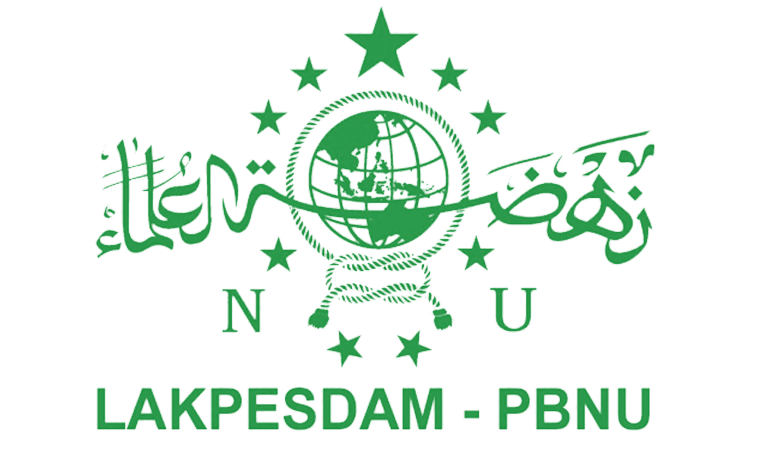REVISITING THE CULTURAL IDENTITY OF NYADRAN IN THE GLOBALIZATION ERA: QUALITATIVE ANTHROPOLOGY PERSPECTIVE
DOI:
https://doi.org/10.31969/alq.v30i1.1415Keywords:
Cultural Identity, Nyadran, Globalization, Anthropology PerspectiveAbstract
In an increasingly integrated and connected era of globalization, cultural identity becomes important in maintaining the diversity and uniqueness of each human group. This research changes the traditional cultural identity of "Nyadran" in the context of the globalization era, using a contemporary anthropological perspective. "Nyadran" is a Javanese cultural tradition that is historically closely linked to local values and local community beliefs. However, along with the development of the era of globalization, this tradition has undergone a significant transformation in an effort to adapt to ever-changing global flows. Using contemporary anthropological research methods, this research involves active participation in the "Nyadran" event as well as interviews with practitioners and participants of this tradition. Data analysis reveals how local elements in "Nyadran" interact with global influences, such as technology, mass media, and changes in social values. In addition, this research explores how globalization can influence the concept of local cultural identity and how local communities react to these changes. The results of this research provide in-depth insight into the dynamics of changing cultural identity in the era of globalization, highlighting the complexity of the relationship between traditional and modern elements in the context of "Nyadran".
References
Ahyani, S. 2012. Islam Jawa: Varian Keagamaan Masyarakat Muslim dalam Tinjauan Antropologi. Jurnal Salam, 15(1).
Ariyanti, J. 2016. Bentuk Makna Simbolis dan Fungsi Tradisi Nyadran di Desa Kedunglo Kecamatan Kemiri Kabupaten Purworejo. ADITYA-Pendidikan Bahasa Dan Sastra Jawa, 8(3), 67-77.
Afandi, A. R. 2023. Makna dan Fungsi Kearifan Budaya Lokal Tradisi Nyadran Bagi Masyarakat Sobowono. Istinarah: Riset Keagamaan, Sosial dan Budaya, 5(1), 20-26.
Andriyani, L. 2021. Tradisi Nyadran Punden Dan Umat Buddha Di Dusun Lamuk, Kabupaten Temanggung. Patisambhida: Jurnal Pemikiran Buddha dan Filsafat Agama, 2(2), 47-58.
Anam, C. 2017. Tradisi sambatan dan Nyadran di Dusun Suruhan. Sabda: Jurnal Kajian Kebudayaan, 12(1), 77-84.
Amrozi, S. R. 2021. Keberagamaan Orang Jawa Dalam Pandangan Clifford Geertz Dan Mark R. Woodward: Javanese Diversity In The View Of Clifford Geertz And Mark R. Woodward. Fenomena, 20(1), 45-60.
Bagio, A. A., & Priyadarshana, W. 2023. Nyadran Tradition as the Implementation of Religious Moderation in Buddhism. Subhasita: Journal of Buddhist and Religious Studies, 1(1), 39–46. https://doi.org/10.53417/jsb.98
Bourdieu, Pierre, 1986, Form of Capital, dalam Richardson (ed), Hand Book of Theory and Research, New York: Greenwood
Bell, C. 1977. Ritual: Perspektif dan Dimensi. Oxford University Press.
Fatanti, M. N., & Tuti, S. N. T. 2020. Interpretation of Nyadran Sonoageng Ritual as the Form of Ritual Communication of Sonoageng Villagers, Nganjuk Regency. Komunikator, 12(1). https://doi.org/10.18196/jkm.121036
Habermas, Jürgen. 1989. The Structural Transformation of the Public Sphere. (trans) Thomas Burger, Britain: Polity Press.
Ibda, H. 2018. Penguatan nilai-nilai sufisme dalam Nyadran sebagai khazanah islam nusantara. Jurnal Islam Nusantara, 2(2), 148-161.
Laily, L. N., & Nashiruddin, N. 2021. Kearifan Lokal Islami Masyarakat Jawa: Mengupas Nilai Tasawuf dalam Tradisi Nyadran. PUTIH: Jurnal Pengetahuan Tentang Ilmu dan Hikmah, 6(1), 23-40.
Lee, E. S. 2021. Book review: Being ethnographic: A guide to the theory and practice of ethnography.
Lefringhausen, K., Moftizadeh, N., Zagefka, H., Bilgen, E., & Barn, R.2022. Testing the theory of cultural inertia: How majority members’ perceptions of culture change relate to prejudice. International Journal of Intercultural Relations, 91(December 2021), 229–241. https://doi.org/10.1016/j.ijintrel.2022.10.009
Nurrahma, N., Rifa’i, A., & Susilawati, S. 2022. Java Culture In The Qur'an Perspective (Case Study: Nyadran Culture In The Region Mt. Merapi Yogyakarta). Al-Misykah: Jurnal Studi Al-qur'an dan Tafsir, 3(2), 123-139.
Patimah, L., Mibtadine, M., & Nuriyanto, L. K. 2022. Islamic Religious Development At Surakarta Main Women's Social Rehabilitation Center. Al-Qalam, 28(1), 155-168.
Ramli, M. (2005). Pemikiran Islam Jawa Menurut Mark R. Woodward (Doctoral Dissertation, UIN SUNAN KALIJAGA).
Riyadi, A. 2017. Kearifan Lokal Tradisi Nyadran Lintas Agama di Desa Kayen-Juwangi Kabupaten Boyolali Local Wisdom of Cross-Religious Nyadran Tradition at Kayen-Juwangi Village of Boyolali. Jurnal SMART (Studi Masyarakat, Religi, dan Tradisi), 3(2), 139-154.
Saputri, R. M., Rinenggo, A., & Suharno, S.2021. Eksistensi Tradisi Nyadran Sebagai Penguatan Identitas Nasional Di Tengah Modernisasi. Civics Education and Social Science Journal (Cessj), 3(2), 99-111.
Sinha, V. 2011. Religion and Commodification: Merchandizing Diasporic Hinduism. Routledge.
Tasoulis, K., Pappas, I. O., Vlachos, P., & Oruh, E. S. 2023. Employee reactions to planned organizational culture change: A configurational perspective. Human Relations, July. https://doi.org/10.1177/00187267231183305
Wahono, E. R., Idris, I., & Wiradimadja, A. 2022. Partisipasi masyarakat dan makna simbolik tradisi nyadran di Dusun Semanding Kabupaten Blitar. Sejarah dan Budaya: Jurnal Sejarah, Budaya, dan Pengajarannya, 16(1), 119-128.
Additional Files
Published
Issue
Section
License
Authors who publish with this journal agree to the following terms:
- Authors retain copyright and grant the journal right of first publication with the work simultaneously licensed under Creative Commons Attribution-NonCommercial-ShareAlike 4.0 International License that allows others to share the work with an acknowledgement of the work's authorship and initial publication in this journal.
- Authors are able to enter into separate, additional contractual arrangements for the non-exclusive distribution of the journal's published version of the work (e.g., post it to an institutional repository or publish it in a book), with an acknowledgment of its initial publication in this journal.
- Authors are permitted and encouraged to post their work online (e.g., in institutional repositories or on their website) prior to and during the submission process, as it can lead to productive exchanges, as well as earlier and greater citation of published work (See The Effect of Open Access).















